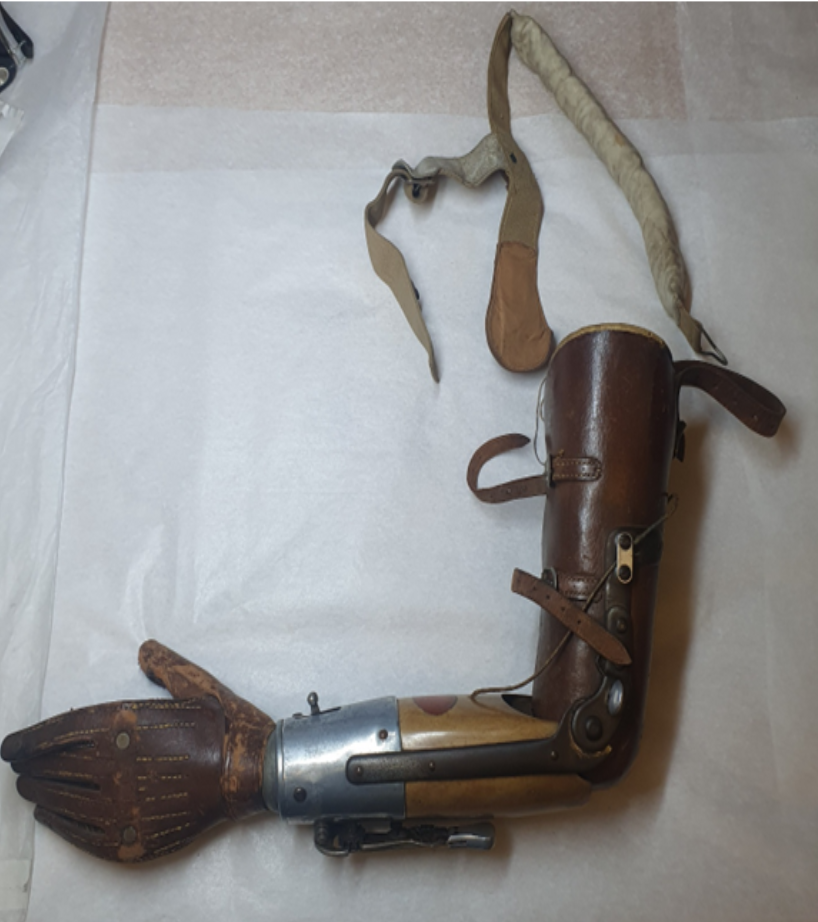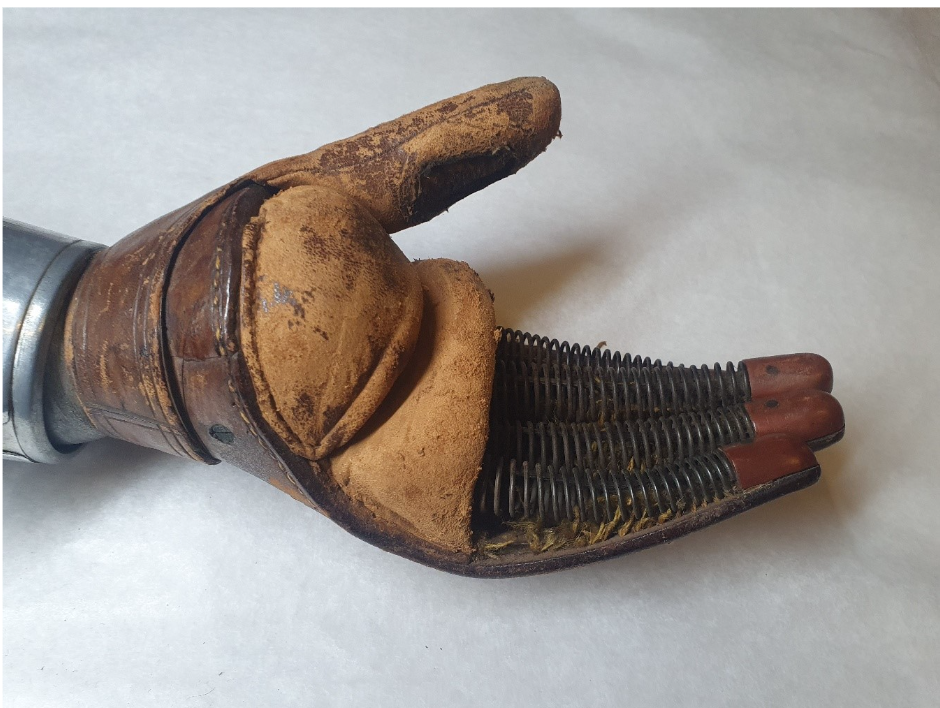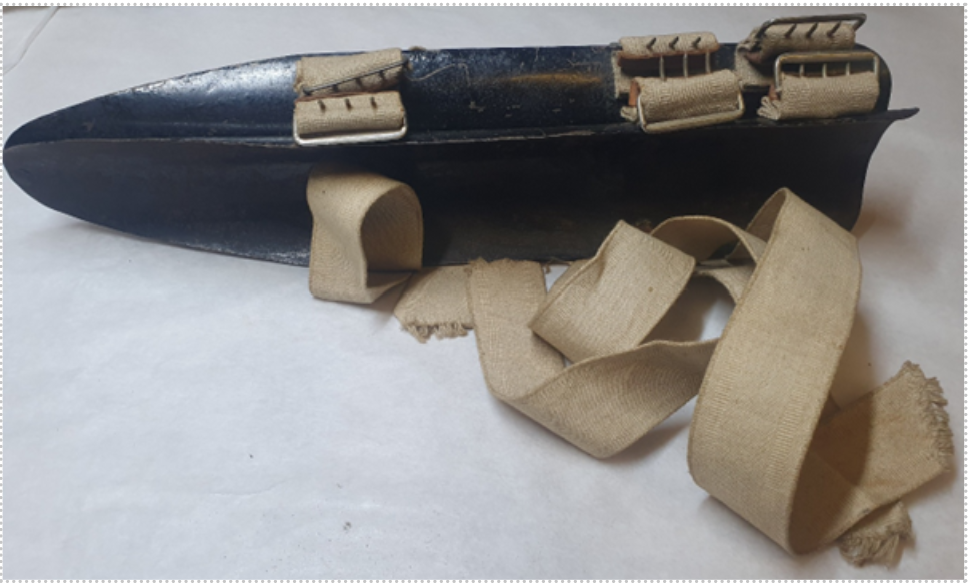Disability Pride Month: Highlighting Hidden Histories at the Museum of Gloucester
A For Folk Sake Blog Post
The UK is home to around 16 million disabled people, and during Disability Pride Month, we take the opportunity to celebrate and amplify their stories. Yet, when we look to museums for these narratives, they are often missing. A quick online search reveals countless pages about museum accessibility—an important topic—but rarely do we see disabled histories themselves represented in the collections.
Everyone deserves to see themselves reflected in museums and galleries. Unfortunately, objects that tell the stories of disabled individuals are often underrepresented or overlooked. At the Museum of Gloucester, we are fortunate to hold a few items that help shed light on this vital part of our shared history.
One such object is a prosthetic arm used by Mr. Bircher of Hucclecote between 1926 and 1936. This remarkable piece of engineering reflects the significant advancements in prosthetics following the First World War, when thousands of servicemen returned home with life-altering injuries. The arm features a leather upper section with a harness, a wooden and metal forearm, and a spring steel and leather hand. Ratchet mechanisms allowed Mr. Bircher to bend, lift, and grip—restoring a degree of independence that earlier, more rudimentary wooden limbs could not provide.
The First World War marked a turning point in the development of prosthetics. With over 2 million veterans returning with disabilities—including more than 40,000 amputees (some estimates suggest the number was even higher)—there was a pressing need for more functional and adaptable artificial limbs. Mr. Bircher’s arm is a powerful example of this innovation.
However, despite the scale of disability among veterans, stigma persisted. Many struggled to find employment, and government support was often inadequate. Pensions were awarded based on the perceived severity of disability, with those suffering complete sight loss, severe facial disfigurement, or multiple limb amputations receiving full benefits—while others received significantly less, sometimes up to 50% less. These policies left many disabled veterans in financial hardship.
Disability, of course, extends far beyond the battlefield. Another item in our collection is a Mermaid Girdlestone Splint, used by a child in the 1930s or 1940s—possibly Mr. Bircher’s brother. This device, which strapped both legs together, was used to treat conditions such as rickets, polio, or knock-knees. While we know little about the child who used it, the splint represents the challenges faced by many children with physical disabilities during that era. Variations of this splint are still used in healthcare today.
We also hold a pair of crutches used by Private Frederick James Beckett, who lost his leg to frostbite during WWI and relied on them from 1914 until his death in 1938. These crutches are a poignant reminder of the long-term impact of war injuries and the resilience of those who lived with them.
These three objects are among the few in our collection that we can definitively link to disabled individuals. But we know that disability is not always visible. Many people live with hidden disabilities, and without detailed histories, it’s likely that other items in our collection—and in museums across the country—were once used by disabled people, even if that part of their story has been lost.
Disability Pride Month is a time to reflect on these hidden histories and to challenge the ableist attitudes that still persist. According to Scope, 3 in 4 disabled people have experienced negative attitudes. The Disability Pride flag includes the colour charcoal to represent those affected by ableism—a powerful reminder of the work still to be done.
There are countless disabilities, many of which remain undiagnosed or unnamed. Some days are better than others. While we may not have objects that represent every experience, that doesn’t mean those stories aren’t present. They may simply be waiting to be rediscovered.
Let’s not lose these histories again.
You can view Mr. Bircher’s prosthetic arm, Private Beckett’s crutches, and the Mermaid Girdlestone Splint on display on the first floor of the Museum of Gloucester, Brunswick Road.
If you have a story related to disability in Gloucester’s history, we’d love to hear from you. Please get in touch
References:
Historic England (2025), ‘Home from the War: What Happened to Disabled First World War Veterans’, Accessed from: Home From the War: What Happened to Disabled First World War Veterans – The Historic England Blog
Scope (2025),’Disability Pride Month 2025’, Accessed from: Disability Pride Month 2025 | Disability charity Scope UK




